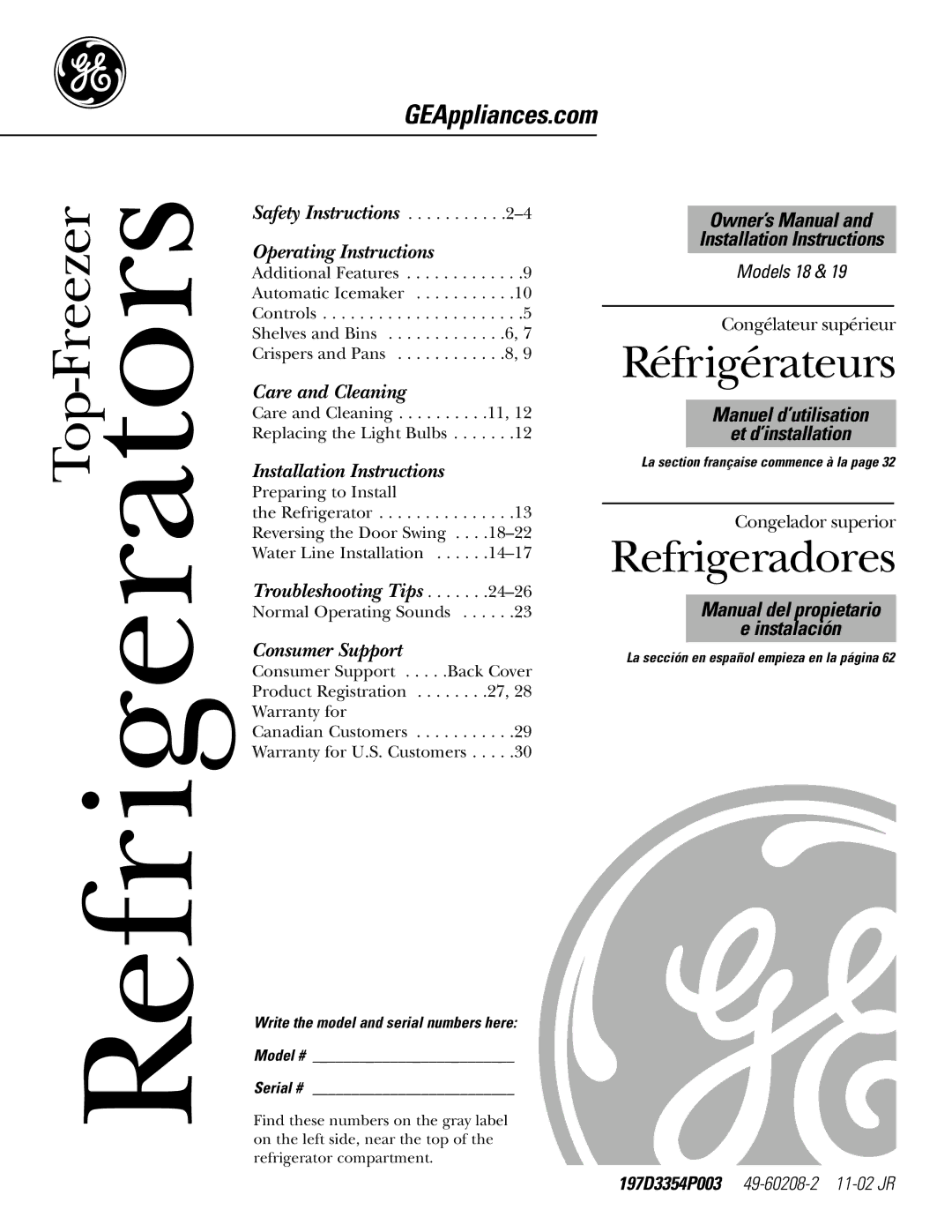MODELS 18 AND 19 specifications
The GE Models 18 and 19, developed by General Electric, represent significant advancements in the realm of gas turbine technology, particularly for power generation applications. Catering to the needs of utility companies and industrial users, these models stand out due to their robust design, efficiency, and reliability.The GE Model 18, introduced in the mid-20th century, utilizes a simple yet effective gas turbine architecture. It operates on a basic Brayton cycle, forming the foundation for subsequent turbine designs. A key feature of the Model 18 is its high-pressure ratio, which allows for enhanced thermal efficiency compared to earlier models. The turbine is designed with multipoint fuel injection systems that improve combustion performance by providing a more uniform fuel distribution. Additionally, the Model 18 features advanced cooling techniques, such as air-cooled components and advanced materials that withstand high temperatures, helping to prolong the operational life of the turbine.
On the other hand, the GE Model 19 built upon the successes of its predecessor and introduced several innovative technologies. One of its standout features is its capacity for variable turbine geometry, which optimizes performance across a wide range of operating conditions. This adjustment allows the turbine to achieve higher efficiency during part-load operations, a crucial capability in today's energy market where demand can fluctuate significantly.
The Model 19 also integrates state-of-the-art control systems that enhance operational reliability and efficiency. These sophisticated systems allow for precise monitoring and adjustments to combustion parameters, reducing emissions and improving fuel consumption. Furthermore, the utilization of advanced digital technology aids in predictive maintenance, allowing operators to proactively address potential issues before they escalate into costly downtimes.
Both models feature a modular design, making maintenance and upgrades simpler and more efficient. This design philosophy reduces the time required for servicing, enabling plants to maintain higher availability and productivity. Moreover, the robust construction of the turbines ensures durability and performance even in challenging environments.
In summary, the GE Models 18 and 19 embody a blend of reliability, efficiency, and advanced technology, positioning them as vital assets in the generation of power. With features that cater to evolving energy demands and sustainability goals, these turbine models continue to play a significant role in the energy sector.

